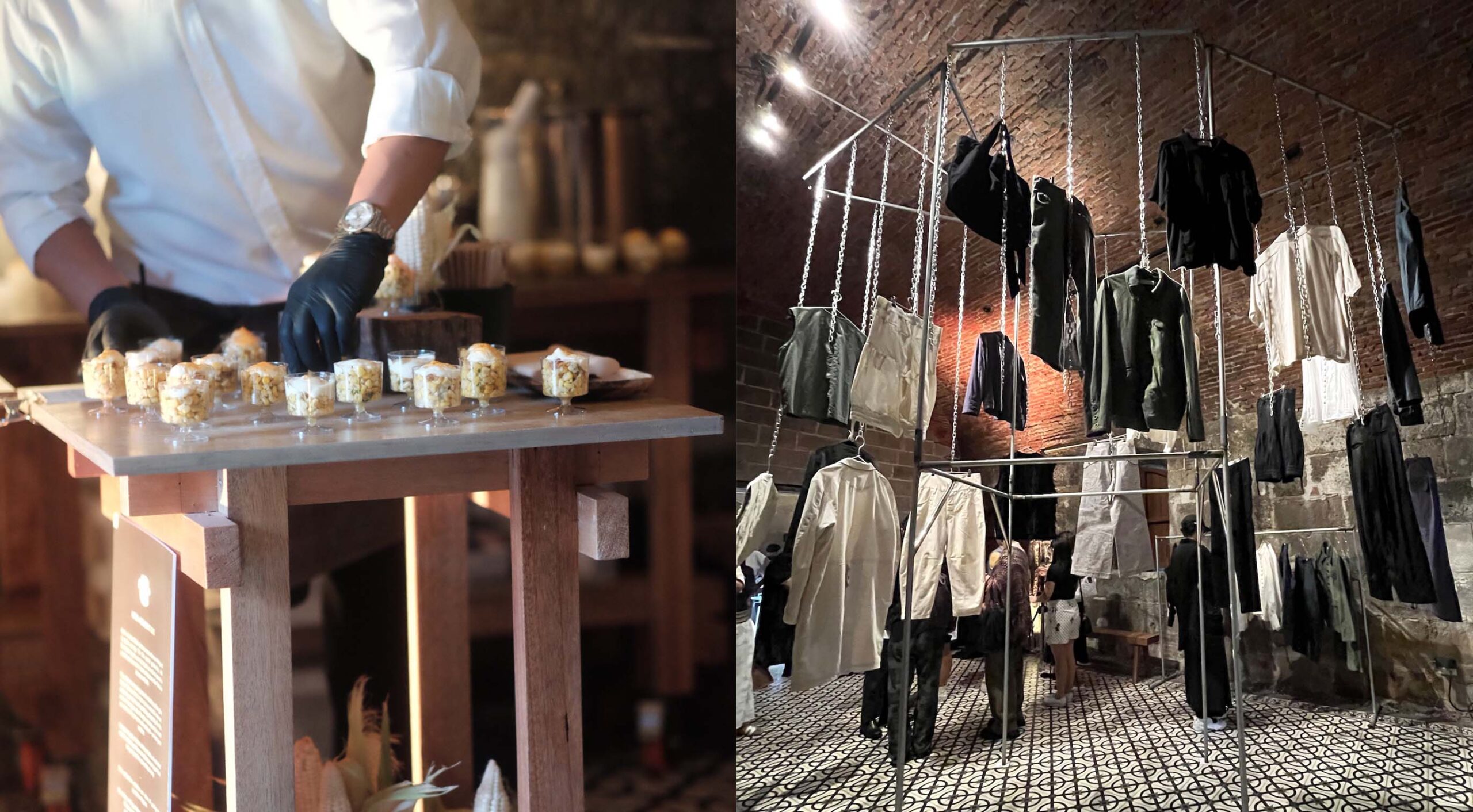How does the paradox of technology apply to the way we dine today?
A possible example is food delivery: There’s no denying that food delivery apps and fast food delivery websites have made dining more convenient. But such an advantage is secured (although not directly) at the expense of certain things such as the quality of food. The wide yet relatively subpar variety of food that can be ordered, most of which are fast food options, are unlike meals that can be bought in a good restaurant or cooked at home. The latter can be an antithesis to the typical meal you can easily order via delivery: Whereas home-cooked meals are personalized and are laden with memories and traditions, a standard burger-and-fries order can only go so far as to satisfy anything beyond sheer hunger.
The problem is not well beyond repair. A further extension of the delivery menu may be all that it would take to address it. And this is exactly what’s been happening in recent years with the rise of the home-cooked meal business—a budding section of the takeout food scene where quality, convenience, and tradition converge.
Ley’s Kitchen’s commitment to quality
We meet Angel Ley, the mind behind Ley’s Kitchen, at her home kitchen in Libis, where a selection of crab dishes and plates of noodles is laid out on the dining table. The setup is reminiscent of a family feast, and Ley, who has been running the business for over three years now, initially wanted to keep it that way. “I love cooking crabs, and I was just serving it to my friends and family. I had no intention of turning it into a business. Then in 2015, my friends told me to try selling it. Sabi ko, ‘I’m not sure if people will like it. I didn’t expect that it would bloom. Kasi sobrang hina ng loob ko,’” she says.
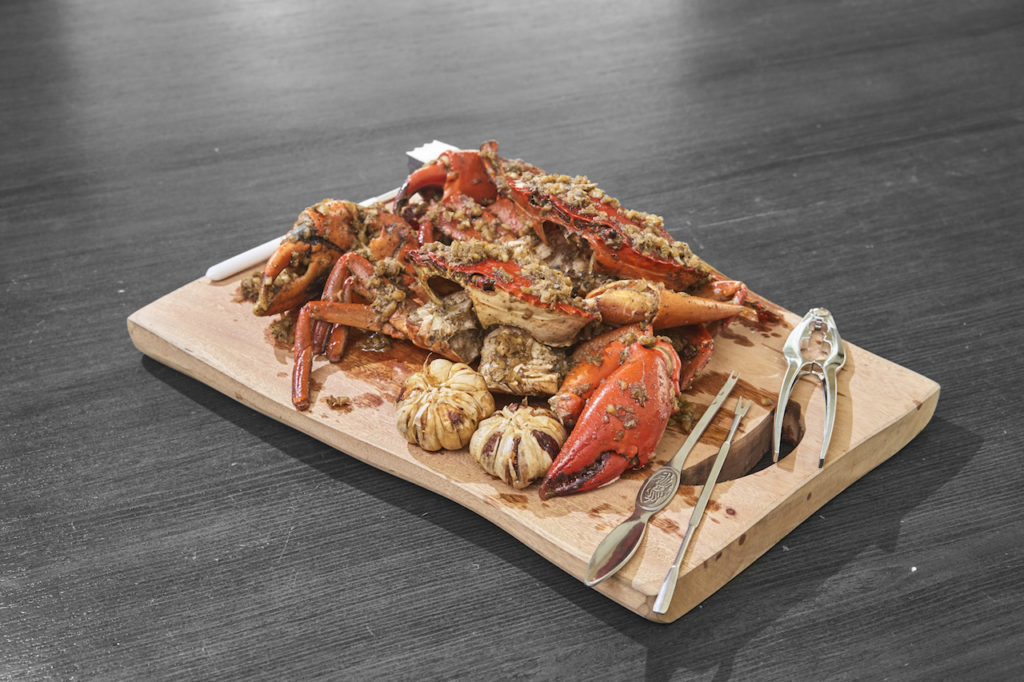
But since its reluctant beginnings, Ley’s Kitchen’s crab dishes have become something of a quiet phenomenon among certain circles. Photos of and personal testaments to the decadence of coconut curry crabs and garlic crabs (Ley’s bestsellers) circulate food blogs and Instagram. Food blogger Jin Perez writes about the coconut curry crab dish: “I cannot really talk about how good this is. If I try, I might start crying. I promise it will be wildly delicious and you must be prepared for much finger and plate licking. My eyes—they water a bit from pure delirium.”
The same kind of feedback floods Ley’s phone: Texts from new customers thanking her profusely, returning clients making special requests. “I have a customer, she found me on Instagram. She married a Japanese guy and they really wanted to bring the crabs to Japan. All the way to Tokyo. So I packed the crabs for them. I invested of course—I didn’t use the usual aluminum trays, I bought a special container and covered it with cling wrap, kasi ipapasok ’yon sa luggage. And now meron sa US who’s making the same request. It’s very fulfilling,” Ley says. While it’s the quality of food that accounts for this kind of response, it’s the scale of the business that allows it to reach Ley.
Operations are composed of a three-person team, a single kitchen, and a trusty crab supplier. And although it didn’t start out that way, daily operational problems are now minimal. “When I was starting out, the first supplier of crabs I got was not so good. I found out that they injected water into the crabs to make them heavy. But now, with the help of my husband and my dad, I got a proper supplier, so the crabs I have now are very siksik,” Ley says.
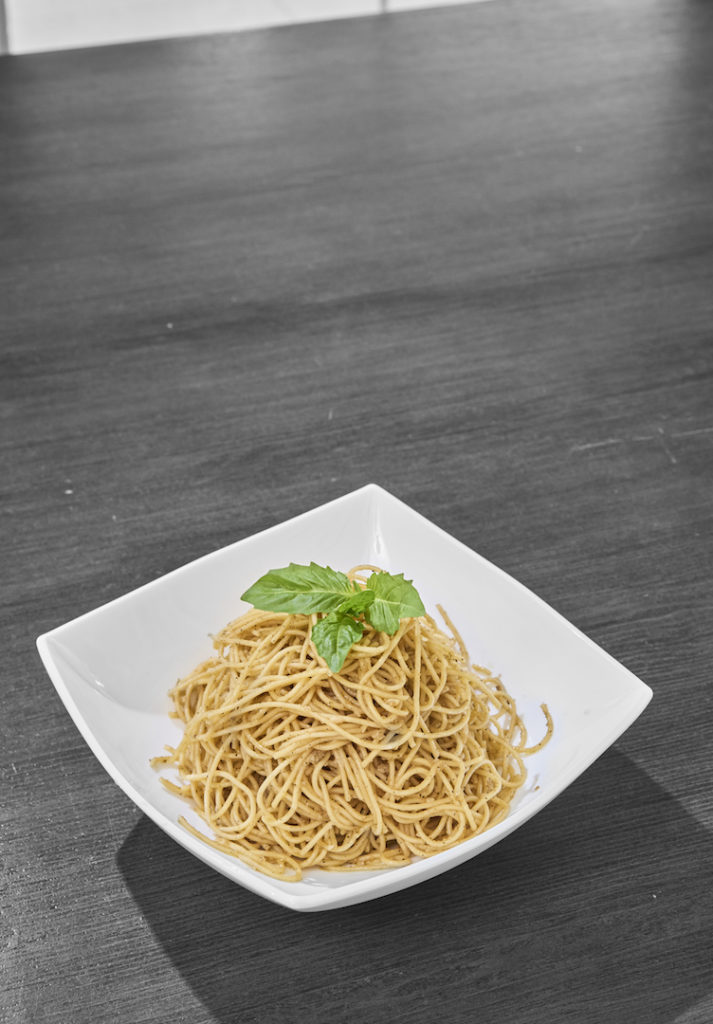
Packaging has also posed some problems, but with a bit of tweaking, and a serious commitment to routine and consistency, operations are now running smoothly: “Before, I would cover the food with foil right after I cook them, but then we noticed that doing that causes moisture, which then affects the flavor. So now I don’t cover the food right away; I let it cool a bit. Also, before, I wouldn’t measure anything, but of course I realized soon enough that I need to measure the ingredients for the taste to be consistent. I’ve also taught the recipes to my team.” Logistics have also been, surprisingly, unproblematic.
The demand is not difficult to understand. The food is objectively good, but there’s also the appeal of getting to enjoy crabs whenever you want and in the comfort of your own home.
And again, there is something about being able to directly communicate with the person who cooked your food that adds to the overall quality of the experience. It’s not exactly transparency (although Ley makes sure to be as transparent as possible with her customers: “If for example one crab dies, I tell my customer that I have to take it out of their order,”) but it does help that diners, whether or not they have met Ley in person, can associate a face with the food they’re eating.
Mister Delicious Everyday Foods’ solution to inconvenience
“There are a lot of people in the [F&B] industry who take themselves too seriously,” says Jeremy Slagle, co-owner of Mister Delicious Everyday Foods. “Not to disparage them—that’s their style, that’s their approach—but we just wanted to be the counterculture to that,” he says. Providing straightforward, fuss-free alternatives to the sometimes unnecessarily complicated and trendy concepts that pervade much of the industry is what Slagle believes in.
With his wife and business partner Jen, Slagle has created a line of retail products meant to be an alternative to a problem diners face every day. “There’s traffic, the cost of dining out is very high also, and so we wanted to provide a kind of service that would come in to fill those gaps. When you come home you’re only 10 minutes away from having a decent meal.”
The Slagles’ Mister Delicious Everyday Foods is a series of well-prepared comfort food stored in blast-frozen, vacuum-sealed plastic bags. Unlike the inception and execution of the project, which, according to Slagle took over a year, preparing these bags of food takes very little time and effort. You simply have to submerge the bags into boiling water for a few minutes, after which you can enjoy a decent meal at your convenience. There’s also a similar sense of ease and flexibility in the selection of food offered under this line.
“There’s traffic, the cost of dining out is very high also, and so we wanted to provide a kind of service that would come in to fill those gaps. When you come home you’re only 10 minutes away from having a decent meal,” says Jeremy Slagle.
“Everyday food is not bound so much by any type of ethnic cuisine, it’s more the types of food that we like to eat day to day, so that means it needs to be varied. But all of it is kind of anchored on comfort food.” Some of the dishes they offer include confit chicken inasal, hamhock minestrone, malunggay hummus, and caldereta.
The Slagles are not new to the industry—both were classically trained in French and American kitchens—and their pragmatism and experience have given them an understanding of what people are pressured into liking as opposed to what they actually want to eat.
There’s a lot to be said about how demand for simple recipes persist and even grow. People are always looking for real food, but in a stressful environment, getting hold of a freshly cooked meal is almost an impossibility. The Slagles believe it doesn’t have to be that way. And if it takes storing freshly cooked food in bags, then they’ll do it—and they’ll do it well.
“Everyday food is not bound so much by any type of ethnic cuisine, it’s more the types of food that we like to eat day to day, so that means it needs to be varied. But all of it is kind of anchored on comfort food,” says Jeremy Slagle.
“We put in a lot of effort to keep the quality, so we have the blast freezer and the vacuum sealer so we can at least avoid the crystallization in the freezer, which is what really destroys frozen food. It’s a big investment. Also in our R&D process, we always have the end product in mind, so if the quality will be seriously compromised by the process, we just won’t put it out,” says Slagle.
Save for a mishap that involves cabbage (they couldn’t figure out how to properly freeze it), the Slagles have been mostly successful in conceptualizing and executing their ideas. They just launched their Everyday Foods line last July, and at this point, they’re mostly hopeful about how their latest project will pan out. “It’s largely a logistics game, really. It’s all about getting things to people. Right now we’re doing two-hour delivery windows. But we’re trying to get that window as narrow as possible so that it will be convenient for our customers. But we’re sure that there’s a lot of potential in this segment, especially since the restaurant scene is oversaturated. I’m actually anticipating a pullback in that area.”
China Mommy’s love for tradition
It’s not often these days that 67-year-old Linda Co can get a moment to herself. The growing demand for her particular brand of traditional Chinese food simply won’t allow it. Her hectic schedule—including early morning trips to the market, preparing orders, recipe testing, and research—began to take over the Co household two years ago when her son Oliver thought of an idea that would change her life. The idea is called China Mommy, an online home business that sells traditional and authentic Fukienese cuisine. “I started posting on social media ’yung mga niluluto ni Mommy, and then my friends commented, saying how good the food looked, and then they started asking if they could order. So naisip namin one day, ‘Sige, gawin nating business, try natin magbenta.’”
China Mommy doesn’t serve the usual Chinese fare. They don’t serve egg rolls or fried rice or siopao or wonton noodles. The menu instead boasts of misua, Chinese lumpia, Lo Ba (Taiwanese minced pork rice topping), and fortune bags (mushrooms, vegetables, and minced pork wrapped in tofu skin)—all intricate, labor-intensive dishes prepared under Co’s perfectionist, watchful eye.
Tradition connotes nostalgia, and sometimes even a kind of sentimentality that, whether we like to admit it or not, definitely sells. But for Co, who had been cooking Chinese food all her life, tradition also means a strict adherence to certain rules. Tradition is just as much about preservation and technicality as it is about sentimentality. This belief manifests itself in her work ethic.
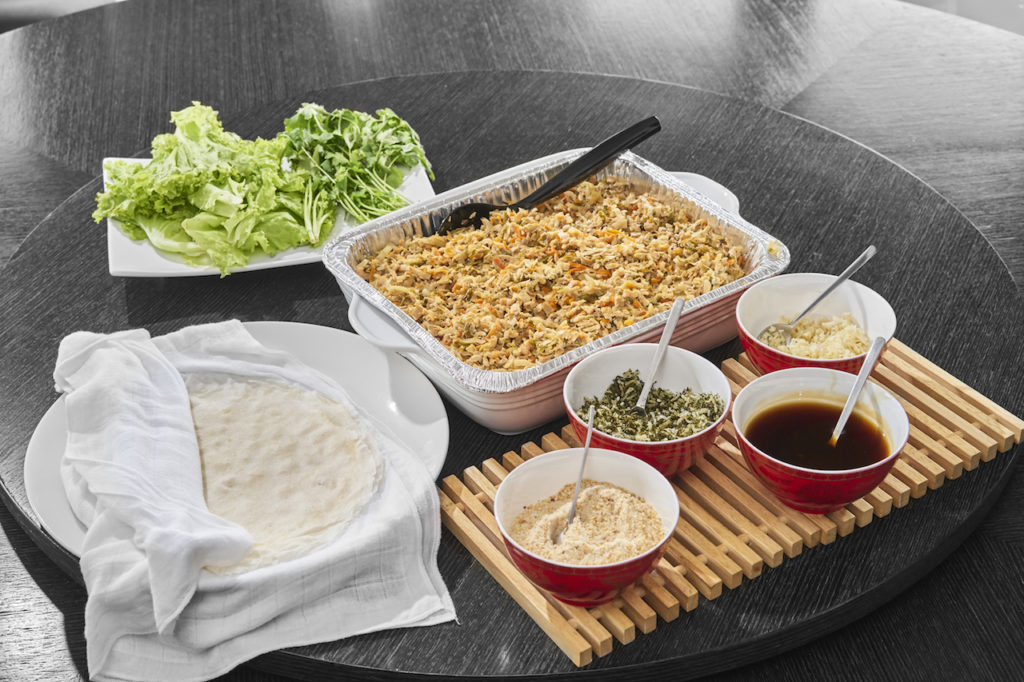
“Si mommy may loyalty talaga siya sa Manila. Gusto niya dun lagi namimili as much as possible, so kahit may mga groceries na malapit, pumupunta pa rin siya sa Manila to do the marketing,” Oliver says. To which Linda replies: “Yung tinda nila [stores in Manila]… iba eh.” “See? [laughs] Kami naman, we tell her, ‘It’s the same thing!’” Oliver says.
Linda also goes through what her children call “phases.” If there’s a new dish that she wants to perfect, she tries and tries until she perfects it. “Meron siyang dumpling phase before. But recently, she went through a prawn ball phase, so there was a time na three weeks kaming kumakain ng prawn balls,” says Oliver.
It’s this easy, affectionate dynamic between mother and son that, among other things, is at the center of China Mommy. Linda takes care of the culinary side, relishing a “newfound happiness” in being able to preserve culinary heritage in a digital era. Her son, on the other hand, serves as a kind of disseminator of Linda’s endearingly purist creations to a hyper-digital population seeking authentic, home-cooked Chinese food.
“There’s definitely a market for it. When we were kids we took all this for granted, but now, when we eat it, it reminds us of our childhood. We have customers na nag-te-text samin na ‘Na-miss ko ’yung ganitong food.’ I think t’s not just the food, it’s also the emotion that it invokes,” says Oliver, who has some plans lined up for their business.
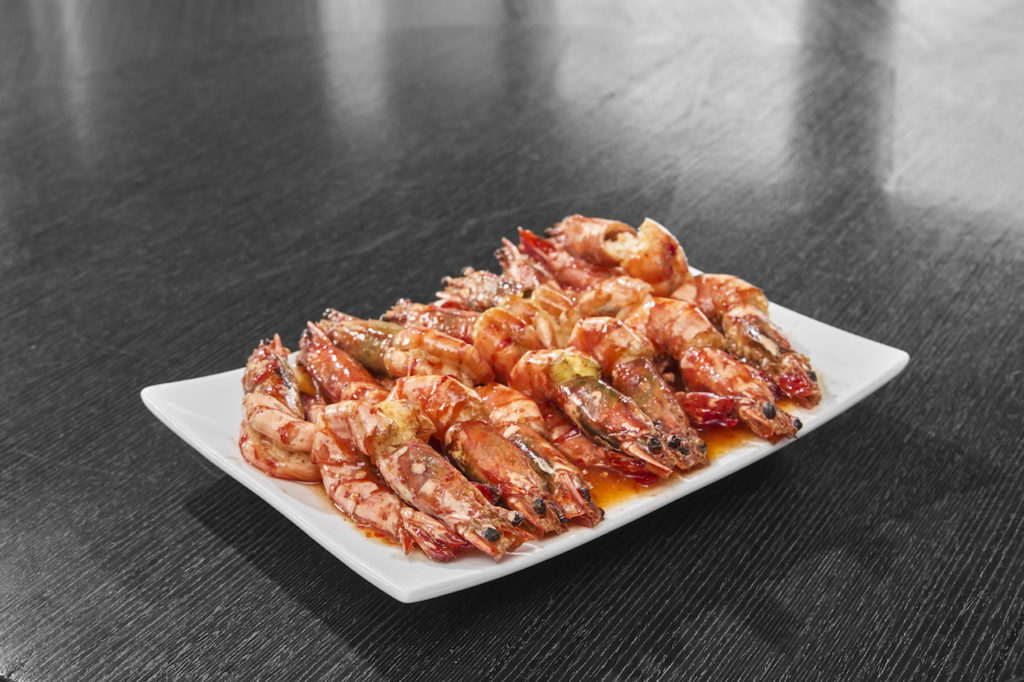
Next for China Mommy is investing in a commissary-type kitchen, expanding the menu, and working on scaling. “That’s [scaling] maybe our only serious problem… we have to get that right, especially since sobrang labor-intensive din ng mga niluluto ni Mommy.”
It’s safe to assume that the commercial aspect of China Mommy escapes Linda, who is simply happy to be doing what she does. Asked about what she thinks about the success of China Mommy, she says: “Masaya, kasi at least maraming nag-a-appreciate ng luto ko, di ba?”
We sit at the Co’s family dining table as Linda expertly prepares a piece of Chinese lumpia, layering the filling onto a sheet of lumpia wrapper. With the aid of a few drops of water brushed onto the edges of the wrapping, she finally seals the roll, sprinkles it with homemade hoti, hands it to us, and urges us to eat. “Masarap ’yan,” she tells us.
China Mommy, like Ley’s Kitchen and Mister Delicious Everyday Foods, is ultimately a food business, but as is reflected in this relatively new business format, there’s an aspect at play here that shouldn’t go unnoticed—the seamless interplay between tradition and technology, quality and profit. The paradox of technology—if there ever was one in the first place—is resolved, even somehow disproven, by the home-cooked meal business.
Originally published in F&B Report Vol. 15 No. 4















